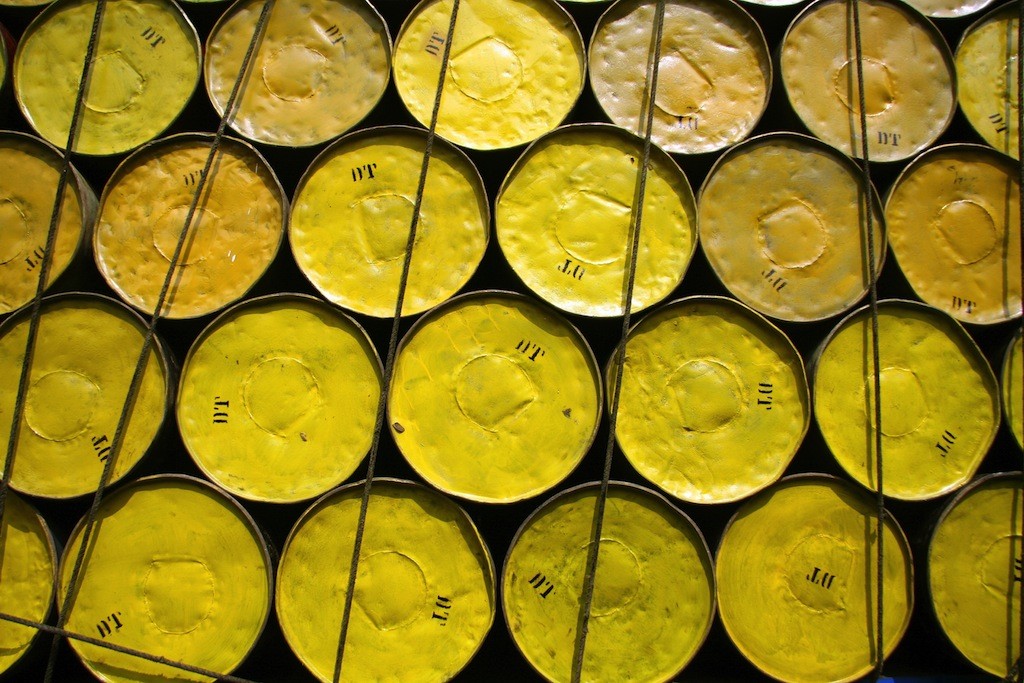Tag Archive for: OIL MARKET
Saudi Arabia, Venezuela talk of co-operation to stabilize oil market
/NewsSaudi Arabia’s oil minister Ali al-Naimi discussed cooperation between OPEC members and other oil producers to stabilize the global oil market with his Venezuelan counterpart on Sunday, state news agency SPA reported.
Venezuela’s Oil Minister Eulogio Del Pino, who is on a tour of oil producers to lobby for action to prop up prices, said his meeting with Naimi was “productive”, his ministry reported.
Cash-strapped OPEC member Venezuela has been calling for an emergency meeting of producers to discuss steps to prop up prices, which are close to their lowest since 2003.
The prospect of supply restraint by the Organization of the Petroleum Exporting Countries and rivals helped oil prices LCOc1 rise above $34 a barrel on Friday from a 12-year low close to $27 last month, despite widespread scepticism that a deal will happen.
“It was a successful meeting and (conducted) in a positive atmosphere,” SPA cited Naimi as saying.
Both ministers discussed Del Pino’s visits to other oil producers and the outcome of his “meetings that aim towards the cooperation of those countries to stabilize the international oil market”, Naimi said.
“During the meeting, there were discussions about the cooperation of the producing countries within OPEC and outside (OPEC)… and the importance of the continuation of such consultations,” SPA added.
However, the comments by Saudi Arabia, the world’s largest oil exporter, show no indication of a shift in the country’s policy of refusing to cut supplies to prop up crude prices, some OPEC delegates said.
“They seem like just general talk about cooperation, but nothing about cutting production,” said one OPEC source.
“It’s always good to say discussions were positive and productive. Never say they were negative. The issue is not with Venezuela, it is with Iran,” said another OPEC source.
Sources familiar with the matter say Iran is reluctant to restrain crude supply as it wants to recover the market share it lost during sanctions that were imposed in 2012 because of its nuclear program. International sanctions were lifted in January.
OPEC oil production jumped to its highest in recent history in January as Iran increased sales and its rivals Saudi Arabia and Iraq also boosted supply, a Reuters survey showed.
Last Wednesday, the Iranian news agency Shana quoted Del Pino as saying six producing countries, including OPEC members Iran and Iraq and non-members Russia and Oman, supported a producer meeting.
But so far, none of OPEC’s Gulf members, including OPEC heavyweight Saudi Arabia, has publicly backed a meeting.
Copyright: Reuters
Five Reasons Oil Is Driving The Stock Market
/NewsAt its basic level the price of oil is a product of supply and demand. Other factors such as political turmoil can influence it but the main factor is supply and demand. At times and especially now oil is viewed as a proxy for the global economy, which has a ripple effect on the stock market. Over the past month the changes in the price of oil have had a very large influence on the US and international stock markets. There are at least five reasons for this which I’ve outlined below.
1. Lower oil prices may signal the global economy is slowing
Commodities such as copper and oil can be signals that worldwide economic growth is accelerating or decelerating. Oil was $100 a barrel in August 2014 and went into free fall to $45 in January 2015. It bounced back to $60 between May and June and then went into a slide and has been trading between $30 and $35 for the past month.
While lower oil prices are positive for US consumers and other countries that are large oil importers such as China, Japan and most of Western Europe concerns about lower growth rates in China are negating the benefits. China had been the driver for increased oil demand over the past five years and with oil prices collapsing it appears that its economy may be slowing more than anticipated. This is also exacerbated by concerns that the economic data released by China is rosier than it actually is.
2. Oil export nations are tapping into their stock holdings
Every large oil exporting country budgeted their tax revenues from oil at much higher levels. Saudi Arabia had $635 billion in foreign exchange reserves as of November 2015 and withdrew almost $100 billion from global asset managers over the past year. Russia’s monetary reserves dropped by $40 billion and could be exhausted in 2016.
For the 11 OPEC countries it is estimated that their budget deficits increased from $17 to $278 billion in 2015. At the current oil price their deficits will be larger in 2016. Norway has one of the largest sovereign wealth funds at $805 billion and is tapping into it to fill its budget gap. While not all the assets that these companies are selling are equities a large percentage must be due to their liquidity. This creates pressure on stock prices.
3. Oil companies cutting spending
As oil prices went over $100 the oil sector boomed in the US and one state that very high correlation of 0.9 for the 50 day rolling average between the S&P 500 and the price of oil. Back in 2013 people with no experience were being paid $100,000 and unemployment was 1% compared to the national rate of 7.5%.
Certain parts of Texas have also been hit hard. I saw a news story about a small oil supply firm that has seen its business drop 90% with only safety related equipment being sold. Another has laid off over 150 of its 200 employees. Exxon also announced that it was cutting its capital expenditures in 2016 by 25% which is billions of dollars.
4. Bank loans to the oil sector
Investors are concerned that a large number of loans that allowed US oil companies to rapidly expand fracking operations over the past few years will default. These companies took on a lot of debt based on higher oil prices and are now hanging on by a thread. While the oil companies continue to pump as much as they can, as long as it covers the marginal cost of extracting it, they are trying to generate enough cash to service the debt and stay in business. This of course keeps prices lower.
The ripple effect for the banks is if they have too much of their loan portfolio lent out to these companies the banks will have to write off a large portion of the loans. Investors are taking more of a shoot first (sell bank stocks they believe are exposed) and ask questions later. Having the price of oil stay low only makes this item worse.
5. Algorithms are driving stock movements based on oil price changes
There is a lot of fast money that gravitates to whatever trading system works. For at least the past month there has been a very high correlation of 0.9 for the 50 day rolling average between the S&P 500 and the price of oil (1.0 being that two assets trade in lock step, 0 being there is no relationship and -1.0 being they move in opposite directions).
Copyright: Forbes
US Shale Firms Snap Up $50 Oil Hedges, Risking Rally Reversal
/NewsWelcome to the oil market’s new vicious cycle.
This past week, as oil prices barrelled over 9 percent higher to break out of a weeks-long trading range, U.S. shale producers jumped at the chance to lock in $50-plus crude for the first time in months, making up for lost time after holding off hedging during the market’s late-summer slump.
U.S. crude oil futures for December 2016 delivery, a favored contract for hedgers, saw trading volume spike to a weekly record high of nearly 190 million barrels, twice as much as the average for the previous four weeks, in what market sources and industry executives said was the biggest wave of hedging since a fleeting rush in late August.
The price premium for the Dec 2016 contract against the same month in 2015 has shrunk to just $4 a barrel, down from more than $7 a barrel two months ago, due partly to forward selling.
Oil producers’ rapid response to the latest move upward comes in contrast to the second quarter, when a moderate price recovery was met with only modest hedging interest as many executives bet – wrongly – that the worst was already behind them.
It also highlights the far more precarious financial position for many shale firms facing rapidly tightening credit conditions, expiring legacy hedges and a deepening fear that prices may stay much lower for much longer than they thought.
For some, hedging is now less an insurance policy than a lifeline as those who have scrimped on protection watched with despair oil prices shuffling between $43 and $48 for six weeks.
Yet their activity also threatens to undermine one of the fundamental reasons for oil’s gains: falling U.S. output.
In addition to creating immediate headwinds by selling into the rally, drillers whose future profits are insured with new hedges will be better able to keep on pumping oil, adding to a global oversupply, the thinking goes.
“Any little rally ends up getting suffocated by the new production it unleashes,” said Vikas Dwivedi, Houston-based global oil and gas strategist at Macquarie Group.
Underhedged, Overtaxed
The push-pull between current prices and future production highlights a new normal for oil markets, in which the short-run cycles of the agile U.S. shale sector have replaced OPEC as the world’s swing supplier. The $50 hedges also illustrate how shale firms have been able to keep drilling at lower and lower costs thanks to efficiency gains and focus on the most productive spots; a year ago, break-even costs were seen nearer $70.
As a result, producers are moving more quickly than ever to catch what may be a fleeting price recovery.
In a push that started Tuesday and continued through Friday, U.S. producers have locked in new production in greater volumes for 2016 and 2017, according to three market participants who watch money flows.
Copyright: Rigzone

Latest News
 Breaking Barriers and Building the Future18 March, 2025
Breaking Barriers and Building the Future18 March, 2025 Fundamental factors to strengthen Pemex12 August, 2019
Fundamental factors to strengthen Pemex12 August, 2019 Offshore Project Development: The Road to First Oil26 July, 2019
Offshore Project Development: The Road to First Oil26 July, 2019



